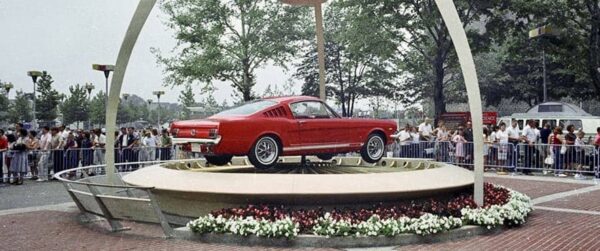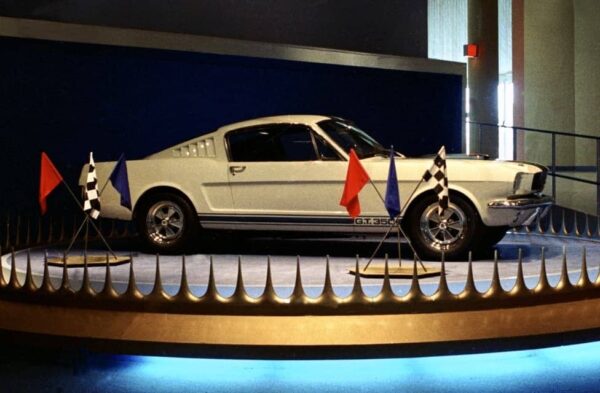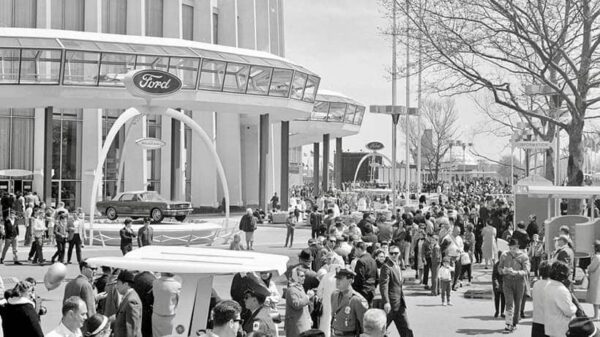60th Anniversary of Ford's Mustang



On April 17, 1964, Henry Ford II unveiled the Ford Mustang at the World’s Fair in New York, sparking a revolution in the automotive industry. With its sleek design, powerful performance, and affordable price, the Mustang became an instant sensation, captivating car enthusiasts worldwide. Over the years, it has evolved into a cultural phenomenon, spawning countless clubs, devoted fans, and a thriving industry of restoration suppliers.
In the 60 years since its debut, the Mustang has continually adapted to the changing automotive landscape, offering a diverse range of models and variations. From the classic muscle cars of the 1960s to the high-performance modern iterations of today, the Mustang remains a symbol of freedom, power, and adventure. Its journey is far from over, with endless miles of open road and new possibilities on the horizon. Let’s look closer at our Top Ten Mustangs of all time.
1964 ½ Ford Mustang Convertible

The Mustang captured the hearts and imaginations of car enthusiasts worldwide with its sleek design, powerful performance, and affordable price. Its instant popularity helped create a new category of automobile known as the “pony car,” characterized by sporty styling, accessible pricing, and high performance. The introduction of the Ford Mustang in 1964 not only changed the automotive landscape but also became a cultural phenomenon that continues to endure to this day.
1965 Shelby GT350
The 1965 Shelby GT350 stands as an enduring symbol of American automotive performance and racing heritage. Born out of the collaboration between Carroll Shelby and Ford, the GT350 was crafted to dominate the racetrack while offering exhilarating performance on the streets. With its race-inspired modifications, including a high-performance V8 engine, enhanced suspension, and lightweight construction, the GT350 delivered a thrilling driving experience unmatched by its contemporaries. Its distinctive styling cues, such as the iconic racing stripes and aggressive bodywork, further emphasized its pedigree as a true performance machine.
1969 Ford Mustang Boss 429

The 1969 Ford Mustang Boss 429 is an icon in American automotive history, born from Ford’s desire to dominate the NASCAR racing circuit. With its monstrous 429 cubic inch V8 engine, originally designed for racing, the Boss 429 boasted unmatched power and performance. Produced in limited numbers to meet homologation requirements for NASCAR competition, each Boss 429 was hand-assembled with meticulous attention to detail.
1971 Ford Mustang 429 Convertible

The 1971 Ford Mustang Convertible sounds like it might be sporting a Boss 429 as well, but alas it’s a de-stroked version of the “Wedge head” 460. That said, this very rare engine produces 370 horsepower and offers all the thrills possible sending that much power to the rear wheels.
1977 Ford Mustang II King Cobra

The 1977 Ford Mustang II King Cobra emerged during a time of significant upheaval in the American automotive industry due to many factors including emissions restrictions and an overall shift in the market towards smaller, more fuel-efficient cars from overseas. The Mustang II as a whole was built from 1974 to 1978 and the King Cobra was Ford’s attempt to reignite the spark that kicked off back in 1964. The King Cobra was available with T-Tops, a four-speed manual transmission, and spoilers and was the first Mustang equipped a V8 labeled “5.0” by Ford.
1993 Ford Mustang Cobra SVT

1993 was the final year of the Fox body and also the first year of Ford’s Special Vehicle Team, or SVT division. For fans of European cars, it might be best to think of this as the Mustang equivalent of the E30-series BMW M3. Unveiled at the 1992 Chicago Auto Show, it was designed to embody SVT’s core values of performance, substance, exclusivity, and value. This model featured a powerful 302 CID V8 engine, producing 235 horsepower and 280 ft/lbs of torque, paired with a manual transmission and distinctive chassis tuning. With only 4,994 units produced for street use, and an additional 107 Cobra “R” models for racing, these are ever-increasingly valuable and desirable cars on the market.
2000 Ford Mustang SVT Cobra R

At the time of its production the 2000 Ford Mustang SVT Cobra R was the fastest factory-built Mustang in the history of the model. It was equipped with a 5.4L, 4-cam, 32-valve V8 that produced 385 horsepower and 385 lb-ft of torque. The engine was paired with a Tremec T-56 six-speed manual transmission that was built for use on race tracks. In the name of performance Ford stripped the Mustang SVT Cobra R of the expected creature comforts like air conditioning, a radio, and rear seats to save weight. Ford limited this to a total production of just 300 examples.
2012 Ford Mustang Boss 302 Laguna Seca

Powered by a naturally-aspirated 5.0L V8 that produced 444 horsepower, the Boss 302 Laguna Seca earned the right to share its name with the legendary track. It was built to commemorate the win at the 1970 Trans-Am race at the namesake track that was taken by a Boss 302. This Mustang was essentially a track-ready car with a stiffer suspension and chassis along with aerodynamic styling inspired by the Boss 302R race car. This car was all business and in all the right ways.
2020 Ford Mustang Shelby GT500

It’s as if we flashed back to the late 1960s and the age of the horsepower wars. The 2020 Ford Mustang Shelby GT500 is powered by a 5.2L supercharged V8 engine that produces 760 horsepower – all the raw, visceral feel of a Mustang from the days of increasingly underreported performance specs accompanied by the modern trappings of luxury that newer Shelby Mustangs are known to offer. It’s equipped with a seven-speed dual-clutch automatic transmission and looks great heading down the road or the track thanks to its stylish aerodynamic package.
2025 Ford Mustang GTD

We saw this car make its first appearance in Monterey last year and it was everything anyone could want from a modern Mustang. It’s set to be a 2025 model-year car with a steep MSRP around $325,000 and will be a fairly limited production car as well. It’s basically a street-legal version of the Mustang GT3 race car, although if you speak with someone at Ford you’ll learn there’s much more to it than that. Though it does feature a functional DRS system!
If all goes well the GTD may take the top step of the podium for its class at Le Mans when it hits the track. Either way, production will be very limited and if you don’t get on your dealership about getting their hands on one for you now, it will be too late very soon.
